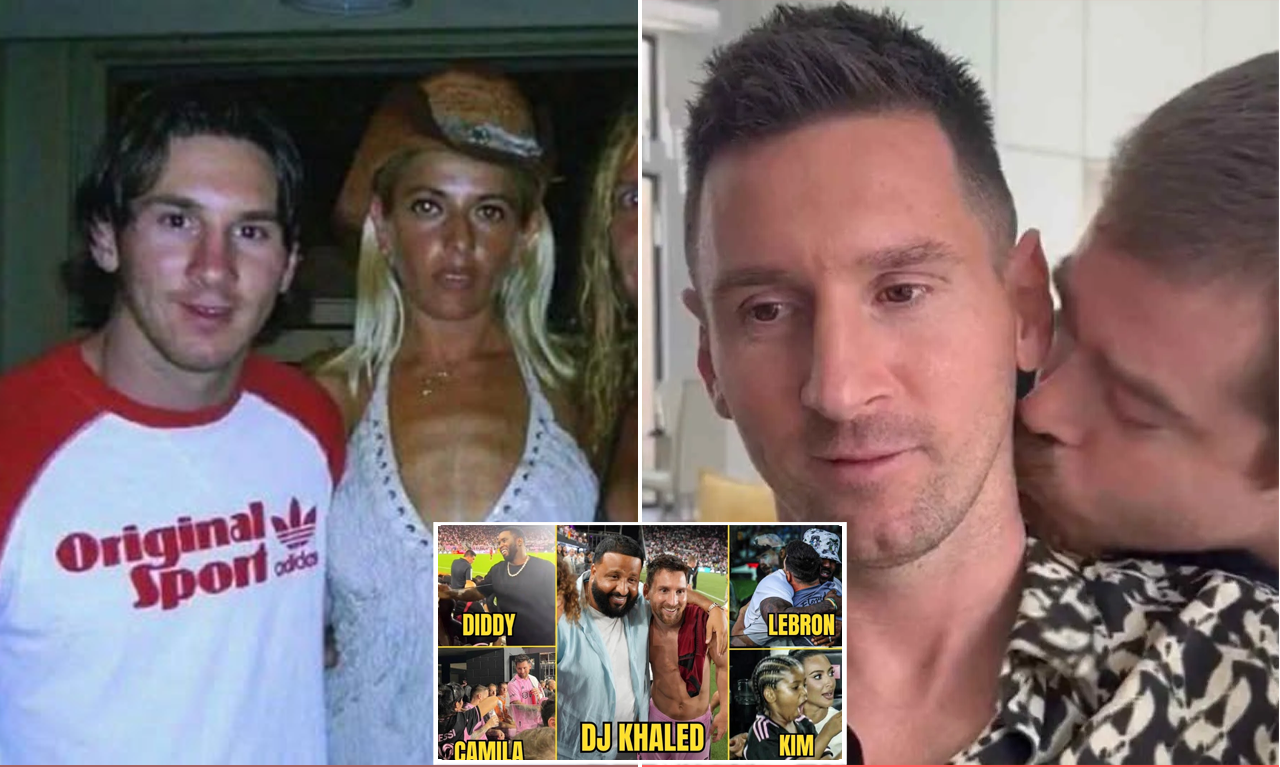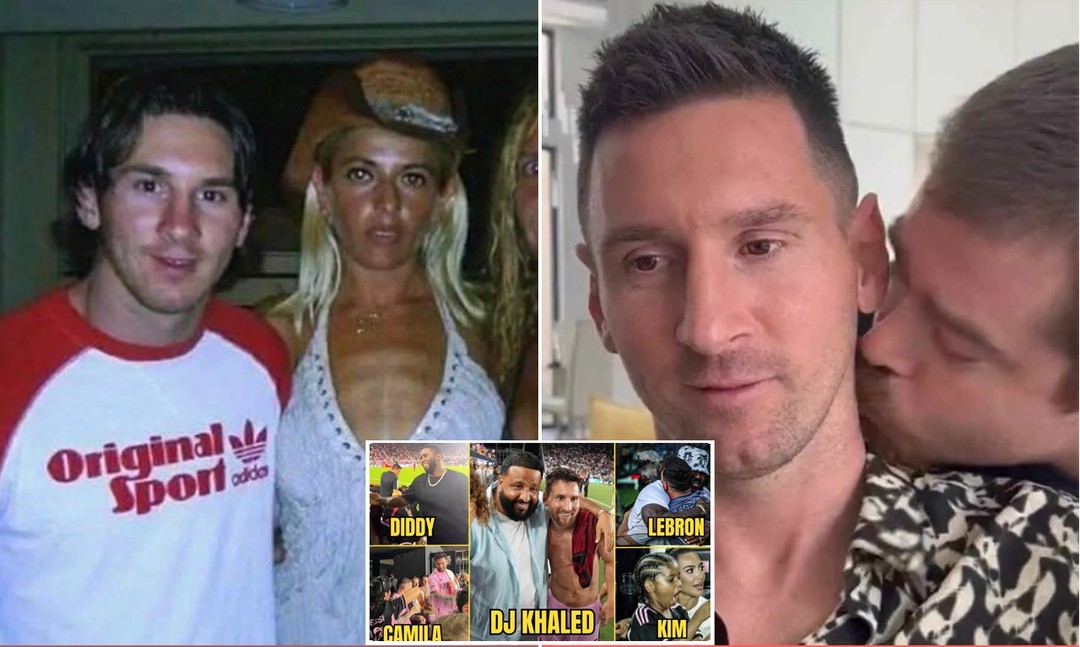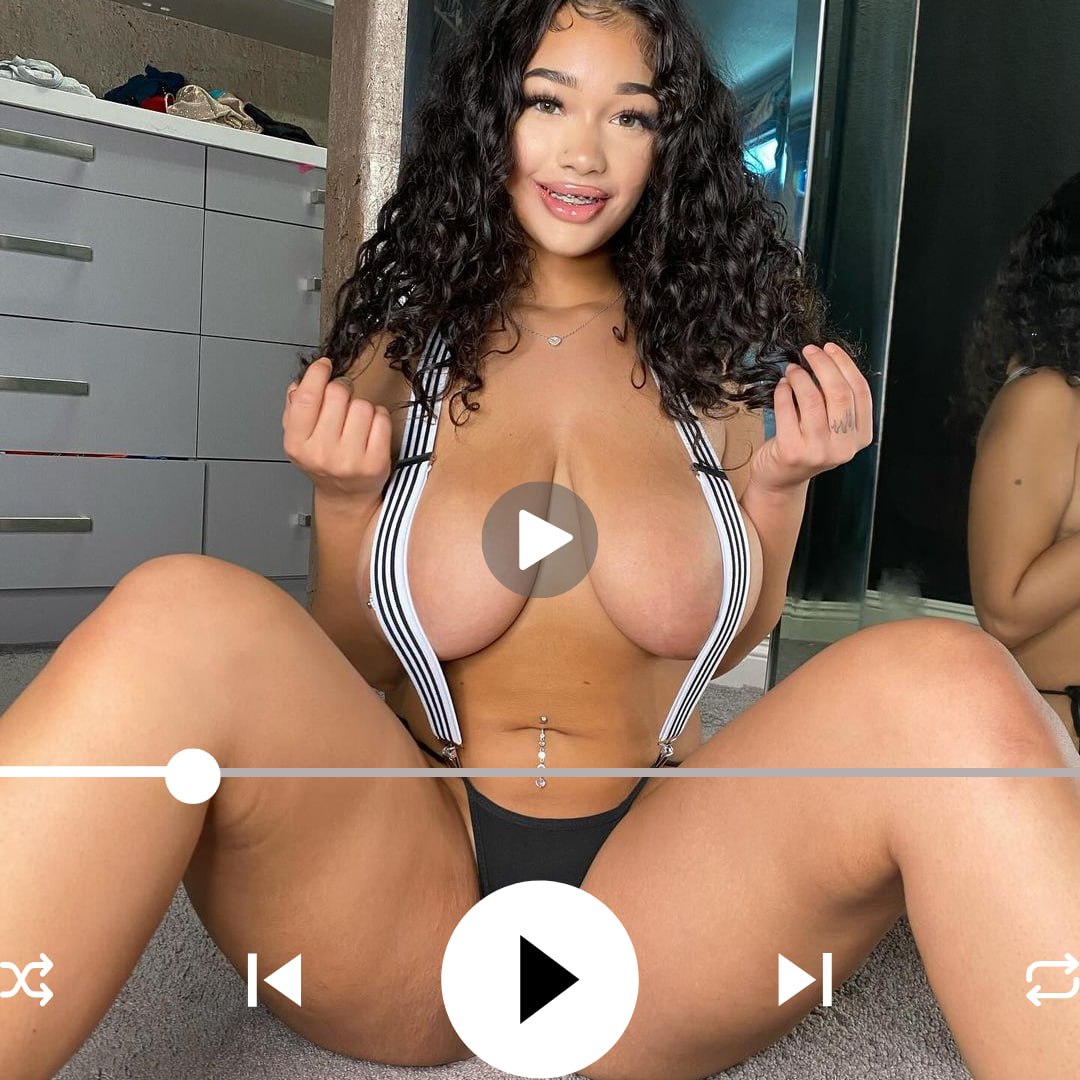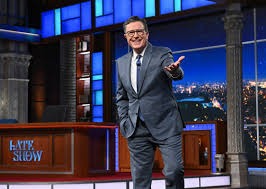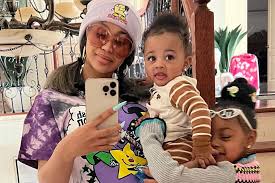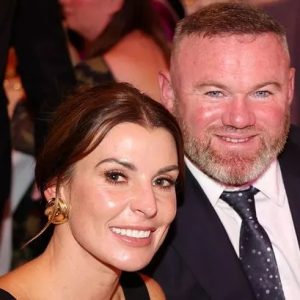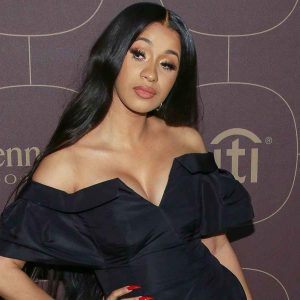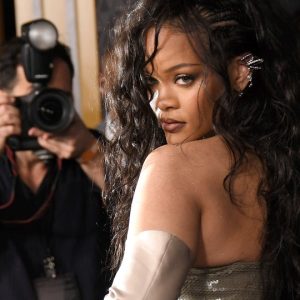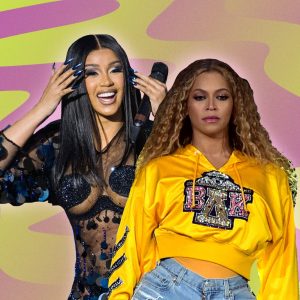
Years before accusations cast his lavishly produced parties in a criminal light, the Diddy bash was a cultural phenomenon, packed with stars from Anna Wintour to Trump and other eager “A-listers begging to get in.”
The venue, a downtown Manhattan club on a side street thronged with everyone from movie stars to wannabes hoping to gain entry to the party that was still raging at 3 a.m., had been at capacity since midnight. As the editor-in-chief of Honey, a prominent magazine for urban women, I’d been ushered in long before. Inside, the crowd — a mix of artists, music and media executives, fashion designers, actors, sports stars, entrepreneurs and models — lounged in their respective red leather-clad banquettes. Bursts of shimmery light would periodically illuminate corners of the dim sexy room as leggy waitresses in black barely-there uniforms lit sparklers and delivered bottles of Cristal to various VIPs. The DJ spun hip-hop banger after banger, and I hadn’t left the dance floor for hours. Suddenly, the DJ lowered the music and our host, Puff Daddy (or Diddy or Love or Sean Combs or whatever you prefer) got up on a table with a mic.
“Everybody chill out,” he yelled. “5-0 is in the house.”
I wiped a sweaty curl out of my eye to see men in uniform streaming in as Puff said pleadingly in the mic, “Please, Mr. Fire Marshal, please don’t shut down the sexy. Look at all the honeys up in here. You and your boys stay. Drinks on me.”
The fire marshal was, apparently, uninterested. The lights came up and the kickoff to New York’s 2001 party season was over.

P. Diddy & The Bad Boy Family The Saga Continues album release party. KMazur/WireImage
Now of course, Diddy’s relationship with law enforcement is starkly different, as is the once glamorous life he led until just a year ago. Charged in federal court with sex trafficking and racketeering with accusations that include kidnapping, arson, forced labor and obstruction of justice, Diddy — referred to in his indictment by his born name, Sean Combs — sits in solitary confinement in a Brooklyn detention center without bail, mere miles from where he staged some of the most memorable bashes in recent celebrity memory.
But that night remains a core early aughts memory for me. It was emblematic of a moment in time when hip-hop was at its zenith, a powerful epoch in which the urban world (music, fashion, media) drove pop culture in New York City and around the world. During that period, much of urban culture revolved around parties: They shaped clothing with high-end designers copying the looks they saw at the events and on the streets; they created opportunities for DJs who rose to prominence as they attracted coveted crowds; they changed the way music was put out as the biggest labels realized they could create buzz for their artists via album release parties that rivaled Saturday night at a hot club. That era of urban parties even changed the way we party as it further popularized roped off VIP sections, bottle service and pricey champagne sprayed over revelers. As a former lawyer for a major music label told me, “Hip-hop parties were not only an expression of influence, they were influence.”

Another look at The Saga Continues release party. KMazur/WireImage
The progenitor of party culture, no one did it better than Puff Daddy back in the day. With his entourage of ballers and video vixens, his retinue of security, his talent for curation, Puff was the ringmaster of relevancy, the pied piper of fun and the force at the very center of cultural power.
While other people and brands threw parties, it was universally recognized that there was no party like a Puffy party. Every time he got folks together, it was a unique and, yes, legendary celebration of an amplified voice and an impactful culture.
Donald Trump. Anna Wintour. Clive Davis. Ashton Kutcher. Former flame Jennifer Lopez. Kim Kardashian. The list of stars and luminaries who held court at a Diddy bash were as impressive as any Met Gala red carpet, and the invite just as coveted.
“The last one to do this was Truman Capote with his Black and White party,” recalls Diddy’s former representative, Rob Shuter, in an interview with The Hollywood Reporter. “Diddy’s No. 1 talent was he is a publicist; he knows how to promote. He’s from the Donald Trump school of publicity, and he knew how to get attention.”

Natane Adcock, Damon Dash, Aaliyah, Jay-Z, Sean “Puff Daddy” Combs and Jennifer Lopez at Puff Daddy’s Fourth of July party on July 2, 2000 in East Hampton. Patrick McMullan/Patrick McMullan/Getty Images
It was through his mentor, Andre Harrell, founder of Uptown Records, that Puff learned to appreciate the ghettofabulous ethos that permeated everything he did. Harrell’s version of fashion and urban culture referenced Nicky Barnes, the flashy drug kingpin and man-about-town who once graced the cover of the New York Times Magazine: designer suits, expensive cars and flowing champagne. Uptown, where Puff cut his teeth, wasn’t just selling music; it was selling the Uptown brand, which was the ghettofabulous lifestyle. A fashion devotee with a penchant for mixing high-end designer pieces and street gear, and a student of all cultures but a disciple of hip-hop and R&B, Puff was the perfect in-house example of what Harrell envisioned that lifestyle to be. He became the chief embodiment and main promoter of ghettofabulosity.
Harrell’s ghettofabulous tutelage gave Puff the blueprint for his own company, Bad Boy Records, and his corresponding events. He had been a regular at New York City nightclub the Tunnel’s hip-hop parties, but they didn’t have the right vibe. So, Puff made downtown club culture aspirational by creating a VIP environment through the curation of people, fashion and no-expense-spared settings. Ranked by Forbes magazine as one of the “World’s Hottest Parties,” his famed White Parties — with their custom white furniture, monogrammed dance floors, thousands of strung lights, acrobats, fire dancers, topless mermaids in the pool, abundance of lobster and steak and weed brownies passed on silver platters — eventually cost around a million dollars by the mid 2000s, Jessica Rosenblum, the White Party’s head producer, estimated in Ebony magazine. (Shuter notes that Diddy didn’t shell out the money for those bashes: “He never spent a dollar, he always had a sponsor.”)

Russell Simmons, Lennox Lewis, Sean “P. Diddy” Combs, LL Cool J and Al Sharpton. Dimitrios Kambouris/WireImage
Not only did the White Parties open up the previously unwelcoming Hamptons for hip-hop and Black people, they made the Hamptons cool for everyone. “When Puffy started throwing his parties, the Hamptons were still white and wealthy. Though his neighbors tried to prevent Diddy’s parties from happening, he was still able to bring all races and creeds together. One year, Trump even flew to the Hamptons in a helicopter to go to a White Party afterparty at Club NV,” Johnny Nunez, who’s been the main celebrity photographer of high-end urban parties since the 1990s, elaborates. “Puff imported the DJs that ran the New York City nightclub scene to spin. Socialites who had only ever listened to Z100 and who never knew the depths of Black music were turning up to Bonecrusher and DMX or Luther Vandross and Stephanie Mills. The music was amplifying the exchange of culture. And now, the hip-hop dances on TikTok that every race goes viral doing can be traced back to our culture and the way Puffy introduced Black music to the white elite.”
Shuter echoes the sentiment, noting that white superstars were desperate to get clout with a Diddy hang. “Their publicists would call for their A-listers, wanting to get them into parties,” he says. “All of these white people could hang out with a person of color … and it would make them look cool.”

Donna Karan, Tommy Lee, Mariah Carey, Sean “Diddy” Combs, Star Jones and Rev. Run at Diddy’s 2007 “Real White Party” in East Hampton. Bryan Bedder/CP/Getty Images
Puffy elevated partying to an art form, and his events became the most coveted invitations at that time. If you weren’t there, you weren’t culturally relevant. Actors from the biggest films and television shows clamored for invites; NBA and NFL stars hounded managers for hookups; Wall Street honchos tried and failed to buy their way in. But even when they were on the list, people were turned away at the door if their clothes weren’t right. We worked on our outfits for days for a Puffy party because we had to come correct. It was Gucci, Louis Vuitton, Christian Dior, Fendi, Louboutin, Blahnik or bust. The White Parties took it to the next level because you couldn’t come in if you dared wear beige or ecru. Puff had a PR rep at the door who managed the list, policed the pure white attire and also judged the fashion. She had no problem telling anyone, no matter how powerful, to get lost if their outfit wasn’t right or their toes were hanging over their sandals. One Puff party invitation from the early year aughts, a post MTV Video Music Awards party he co-hosted with Guy Oseary in midtown, exemplified the stringent standards of admittance:
“If your shoes are scuffed, you’re going to have a problem. If you’re wearing jeans, you’re on the wrong track. Pull out the flyest sh*t in your closet, or have your stylist pull something for you,” with suggestions including Gucci, Dolce & Gabbana and his own Sean John collection. Men were told to get clean shaves; women were told “hair-dos, waxing, manicures and pedicures” were a must.
“He was just the perfect ringmaster at this because that is what he was: He was our generation’s P.T. Barnum, he put on a show,” says Shuter. “Everything was about detail, everything was about press.”
At the center of the concentric circles of power was a tight-knit community of pure Black excellence. The former CEO of a music label explains, “We were part of an ecosystem of talented young music execs that had never had money like that before in our lives. Puff introduced us to a new lifestyle. He showed us what the next level looked like. A-list non-Black creatives were desperate to be next to us because we were the hot shit!”
At the height of Puff’s era of legal revelry, we’d be partying with the artists who made the music we were dancing to; we were wearing the designers whose brand executives were at the next banquette, and we were making brand representation deals and booking magazine covers in banquettes with artists and athletes alike. The ability to create cultural moments alongside culture creators was, yes, legendary.
Puff’s talent for curation made his events so legendary that they, along with hip hop culture, spread around the world. Soon, Puff was throwing parties in St. Tropez, Ibiza, Miami, Morocco and Los Angeles. And everyone was there: Mariah Carey, Martha Stewart, Jay-Z, Lindsay Lohan, Howard Stern, Oprah Winfrey, Lil’ Kim, Donna Karan, Al Sharpton, Paris Hilton, Jermaine Dupri, Jon Bon Jovi. No matter in which country, when you were at a Puff party, you knew you were part of an elite multicultural crowd of tastemakers, changemakers, powerbrokers, newsmakers, creatives and some of the most gorgeous cover girls you’ve ever seen.

Sean “Diddy” Combs during a White Party in St. Tropez. Jon Furniss/WireImage
Although by the early aughts, Puff had become the undisputed leader of the ghettofabulous movement, Harrell didn’t see Puff’s interpretation as empowering. To him, the Bad Boy version was empty, full of glitter and gold with no inspiration. As Harrell told me in an interview before his death in 2020: “When I first met Puff, I could practically feel the fire coming from deep within his soul. Even though my hiring Puff as an intern put him in the game, it felt more like I was just getting out of the way of a bullet train, speeding inexorably down the track toward an ultimate goal. But the faster a train goes, the easier it is to jump the tracks.”
And that’s exactly what happened.
There is a stark difference between the first Puff party I attended and the last. The first was a White Party at his house in the Hamptons in 2000. The last was a Grammys afterparty at his mansion in Los Angeles in 2017 to which Harrell had invited me, as he and I were working on a book together. At his first White Party, Puff was dancing, he was on the mic hyping the crowd, he was sending Champagne to VIP banquettes, he was making it “grown and sexy” as he used to say. In the later years, he wasn’t happy or partying, nor did he look interested in hyping his guests. Instead, he was sitting in a corner, surrounded by a mass of random people, looking glassy-eyed and bored. At that last party, I remember Cassie glued to his side, looking equally glassy-eyed and sad. And although it was his party, you no longer got the sense that it was a Puffy party.
While I never personally saw anything illicit other than some drug use in corners, there was a feeling of freedom at the early-year parties. Perhaps because it was so hard to get in, most of us, naively, felt as if we were in a tight-knit circle of trust where we could let our guard down, dance on tables and do tequila shots until dawn. We were in a “safe space” that turned out to be utterly unsafe.
It’s not surprising that absolute power corrupted Sean Combs absolutely — especially within the context of the larger hip-hop music and culture trajectory from fun to dangerous as gangsta rap took over. Along with gangsta rap’s glorified depictions of violence came sexually explicit themes within lyrics and urban iconography that, ultimately, yielded widespread misogyny. As a woman working adjacent to the male-dominated urban music industry, I realized that the misogyny — and accompanying hypermasculinity —created dangerous situations for me in too many environments, including the parties that had, at one time, seemed like a harmless good time.
I hate to see the conflation of Puff’s legal parties in the heyday with the abuses of power and depravity that have now been alleged in the last few years, and detailed in criminal documents.
But in reading the allegations against Diddy, one could perhaps see the throughline between the orchestrated extravagance of those parties and the way in which he purportedly controlled the so-called “freak-offs” and those involved. And there was always another side to Diddy than the charming party host: The man who was acquitted of gun charges in a 1999 shooting that left three people injured and resulted in a years-long sentence for his protégé Shyne, who later said he took the fall for Diddy; or the mogul who violently assaulted Steve Stoute in his office over his anger over the direction of a Nas-Diddy music video (felony charges were dropped at Stoute’s request and the case was settled out of court).
Thankfully, while Sean “Puffy” “Diddy” “Love” Combs has been undeniably impactful to urban culture, the urban party world has long since moved on. Branded events at Cannes, Martha’s Vineyard and Sundance have replaced Puff’s bacchanalias, and Michael Rubin’s annual Hamptons White Party is now the place to see and be seen. Can’t stop, won’t stop.
